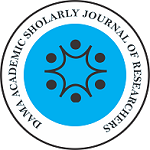Authors: Hery Kurniawan1, Suharjono2
1Master of Clinical Pharmacy, Faculty of Pharmacy, Airlangga University, Surabaya, Indonesia 2Department of Clinical Pharmacy, Faculty of Pharmacy, Airlangga University,
Dharmawangsa Dalam, 60286, Surabaya, Indonesia
Email: hery.pharmacy@ymail.com
Abstract
Atrial fibrillation (AF) is the most common type of arrhythmia and its prevalence is increasing. The incidence of atrial fibrillation increases every year. Therefore, atrial fibrillation also causes increased mortality and morbidity, including the incidence of stroke, heart failure, hospitalizations, and decreased quality of life. Atrial fibrillation increases the risk of stroke by up to 5 times and is thought to cause 25 % of strokes and patients with atrial fibrillation have a 3 times higher risk of heart failure compared with patients without atrial fibrillation. Risk factors of atrial fibrillation are age, history of myocardial infarction, history of heart failure, obesity, cardiothoracic surgery, smoking, alcohol consumption, hyperthyroidism, congenital heart disease, chest infection, and family history. Pharmacotherapy of atrial fibrillation is generally the use of anticoagulants for stroke prevention, heart rate control, heart rhythm control and upstream therapy.
Keywords: Atrial Fibrillation, AF, Classification, Pharmacotherapy

